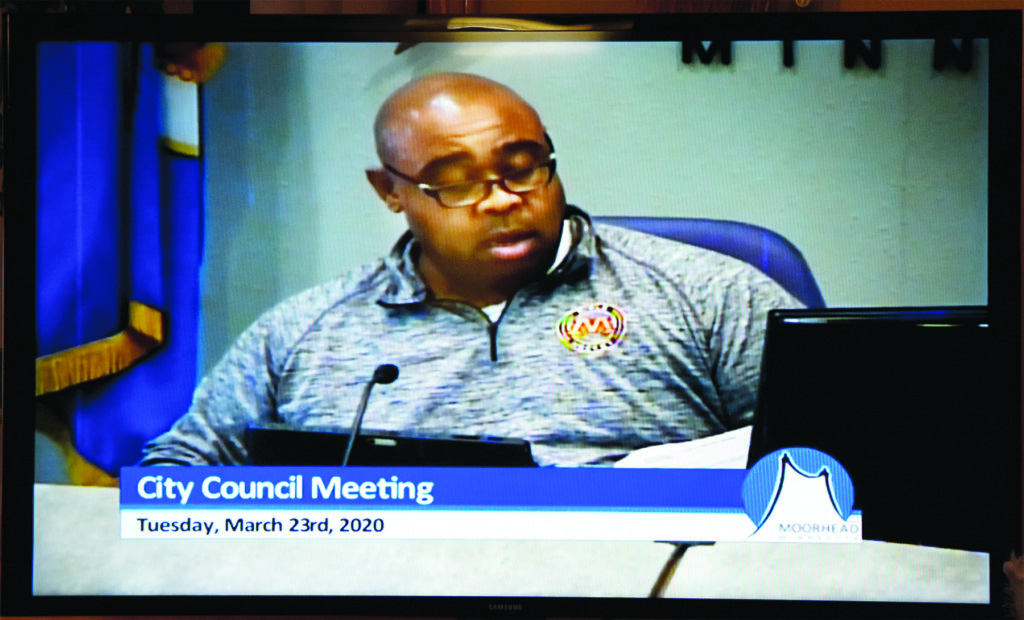
Nancy Edmonds Hanson
nancy.edmonds.hanson@gmail.com
With the coronavirus in mind, the Moorhead City Council kept its distance Monday. Council members tackled the agenda while maintaining social distancing – using internet technology to have their say from their homes. Only Mayor Johnathan Judd and half a dozen widely spaced city staffers occupied the chambers in City Hall, yet the roll call tallied perfect attendance, with members’ responding “here” from living rooms in every corner of the city.
Public works director Steve Moore offered a welcome distraction from everpresent talk of the coronavirus with an overview of the city’s program to maintain its “urban forest” – the 27,000 trees on public land within the city limits. Yes, those trees are individually counted and assessed in a comprehensive inventory. Each is examined up close and trimmed by crews on a 10-year revolving schedule; the youngest, up to 15 years old, get a visit every three or four years for trimming and shaping as they reach toward full growth. “It’s like raising a kid,” Moore advised. “Put in more time when they’re young, and they grow up straight.”
Yet even with talk of shady boulevards and parks, Moore couldn’t avoid the word “epidemic.”
Half of Moorhead’s tree population is made up of green ash and elm trees. While local elms’ susceptibility to Dutch elm disease has prompted years of removals and the prospects of many more, the ash trees – often planted to replace them – now face incoming peril. The invasion of the emerald ash borers is drawing closer, Moore said. The bright green insects, native to Asia, first appeared in North America in 2002, believed to have hitched a ride in packing material. Since embarking in Detroit, the half-inch-long insects have been expanding their range. “They’ve made it up the I-94 corridor as far as Sauk Centre, Minnesota,” Moore told council members. “It’s not a question of if they’ll get here, but when.”
The impact will be dramatic. Ash trees make up 30% of the urban forest. Moore explained that EAB (emerald ash borer) damage can be barely perceptible in the first five years of infestation as the pests eat their way beneath the bark, but then dramatically accelerate as damage deepens. “After 15 years, mortality is 100%,” he warned.
The forestry department has been working on a plan to combat the invaders. A $50,000 grant from the Department of Natural Resources has already been secured to help remove 225 at-risk trees, with the city responsible for replacing them with an equal number of different species. As the invasion develops, he said the department will eventually need an estimated $150,000 to $200,000 per year to keep up with the casualties. Other sources of financing are being considered, including reassignment of resources and a possible increase in the monthly city forestry fee that appears on utility bills.
Moore suggested that adjusting one aspect of the forestry department’s services could help stem the tide. He noted that 48% of his department’s seven full-time and six to eight seasonal employees’ time is spent picking up and chipping the branches and chopped-down wood that homeowners leave on their boulevards every week during the summer. He suggested that cost could be reduced by deploying his pick-up crews biweekly, perhaps on the same schedule used by sanitation trucks for recyclable garbage. The council concurred, endorsing the plan to take effect in months to come.


